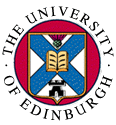
Division of Informatics
Forrest Hill & 80 South Bridge

Research Paper #785 | |
|---|---|
| Title: | Beyond the Hough Transform: Further Properties of the R,Theta Mapping and Their Applications |
| Authors: | Wright,M; Fitzgibbon,AW; Giblin,P; Fisher,RJ |
| Date: | Jan 1996 |
| Presented: | Submitted to the European Conference on Computer Vision, Cambridge, U.K. - Workshop on Shape Representation |
| Keywords: | |
| Abstract: | The Hough transform is a standard technique for finding features such as lines in images. Typically, points or edgels are mapped into a partitioned parameter or Hough space as individual votes where peaks denote the feature of interest. The standard mapping used for line detection is the R,theta mapping and the key property the Hough transform exploits is that lines in the image map to points in Hough space. In this paper we introduce and explore three further properties of the R,theta mapping and suggest applications for them. Firstly, we show that points in Hough space with maximal R for any value of theta are on the convex hull of the object in image space. It is shown that approximate hulls of 2D and 3D hulls of objects can be constructed in linear time using this approach. Secondly, it is shown that a simple relationship exists between the occluding contour of an object and the R,theta mapping and that this could in principle be used to generate approximate aspect graphs of objects whose geometry was known. Thirdly, it is shown that antipodal points on object boundaries, (which are optimal robot grasp points), can be found by translation and reflection of the R,theta representation. In addition we show the relationship between the R,theta mapping used in the Hough transform and the classical mathematical theory of duals. We use this analysis to prove formally stated properties of the R,theta mapping from image space to Hough space and in particular the relationship to the convex hull. |
| Download: | POSTSCRIPT COPY |